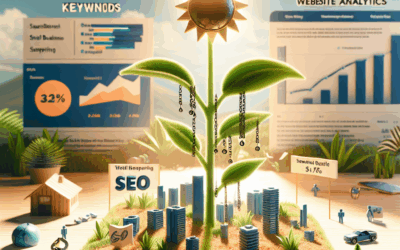Understanding On-Page SEO
On-page SEO refers to the practices and techniques applied directly on your website to improve its visibility and performance in search engine results. While off-page SEO focuses on external factors like backlinks, on-page SEO is all about optimizing individual web pages. This entails enhancing both the content and HTML source code of the page. By implementing effective on-page SEO strategies, you can not only improve your website’s ranking in search engine results pages (SERPs) but also enhance its overall user experience.
The Importance of Content Quality
At the core of effective on-page SEO is high-quality content. Search engines prioritize content that is relevant, informative, and valuable to users. To boost your website’s performance:
- Generate Useful Content: Analyze your target audience and create content that answers their questions or solves their problems.
- Use Appropriate Keywords: Perform keyword research to identify terms your audience is searching for and integrate these keywords naturally into your content.
- Maintain Content Freshness: Regularly update your content to ensure its relevance and accuracy, which signals to search engines that your site is current.
Optimizing HTML Tags for Better SEO
Properly optimized HTML tags help search engines understand the context of your content. Key elements to focus on include:
- Title Tags: Each page should have a unique title tag that accurately describes its content while incorporating target keywords.
- Meta Descriptions: Write compelling meta descriptions that entice users to click on your link in the SERPs, including relevant keywords without keyword stuffing.
- Header Tags: Utilize header tags (H1, H2, H3) to organize your content hierarchically, making it easier for both users and search engines to navigate.
The Role of URL Structure
A clean and descriptive URL structure is vital for both user experience and SEO. Here are some best practices:
- Use Short and Descriptive URLs: Keep your URLs concise and indicative of the content contained on the page.
- Incorporate Keywords: Integrate relevant keywords within the URL to enhance its keyword relevance.
- Avoid Special Characters: Use hyphens to separate words instead of underscores or special characters, as this improves readability.
Enhancing Website Performance with Internal Linking
Internal linking is a powerful on-page SEO strategy that helps boost your website’s performance. By linking to other relevant pages within your site, you:
- Improve Navigation: Guide users to related content and offer a better browsing experience.
- Distribute Page Authority: Share the ranking power across your site, which can help lesser-known pages gain visibility.
- Encourage Longer Visit Duration: Provide users with ample opportunities to explore your site, leading to increased engagement and lower bounce rates.
The Importance of Mobile Optimization
With the rise of mobile devices, optimizing your website for mobile users is no longer optional. A cellphone-friendly site can significantly affect your search rankings. Ensure your website:
- Is Responsive: Employ responsive design techniques to make your site adaptable to any screen size.
- Loads Quickly: Optimize images and utilize caching to decrease load times, as speed is a ranking factor in mobile searches.
- Provides a Smooth User Experience: Ensure navigation and functionality are intuitive, maintaining consistency across devices.
Utilizing Image Optimization for Better Performance
Images play a significant role in user engagement but can slow down your page if not optimized. Effective image SEO includes:
- Choosing the Right File Format: Use suitable formats such as JPEG for photos and PNG for graphics with transparency.
- Using Descriptive File Names: Rename image files using relevant keywords to improve search visibility.
- Applying Alt Text: Include descriptive alt text for images, enhancing accessibility and contributing to SEO.
Measuring On-Page SEO Performance
To truly understand the effectiveness of your on-page SEO efforts, you need to measure performance. Use tools like Google Analytics and Search Console to track:
- Organic Traffic: Monitor the number of visitors coming from search engines.
- Bounce Rates: Analyze how many users leave your page after viewing only one, indicating the need for improved engagement strategies.
- Keyword Rankings: Keep track of how your keywords are performing over time to adjust your strategy as needed.
Conclusion
Effective on-page SEO is essential for enhancing your website’s performance and ranking in search engine results. By prioritizing content quality, optimizing HTML tags, refining URL structures, leveraging internal linking, ensuring mobile optimization, and measuring performance, you can significantly boost your online visibility. Remember that on-page SEO is an ongoing process; regular analysis and adjustments are crucial to keeping up with changing algorithms and better serving your audience. Embrace these techniques to create a user-friendly website that stands out in today’s competitive digital landscape.
At USA Marketing Pros, we specialize in transforming your online presence with professional web design, SEO, and digital marketing solutions. Based in Arlington, VA, we proudly serve businesses across Northern Virginia and the broader Washington, DC area. Reach out to us today to see how we can help your business grow at (202) 888-5895 or visit us at 701 12th St S, Arlington, VA 22202.
Need professional Search Engine Optimization services? Discover our highly-rated SEO Services
Discover all our Digital Marketing Services
Reserve a SEO Strategy Call



0 Comments